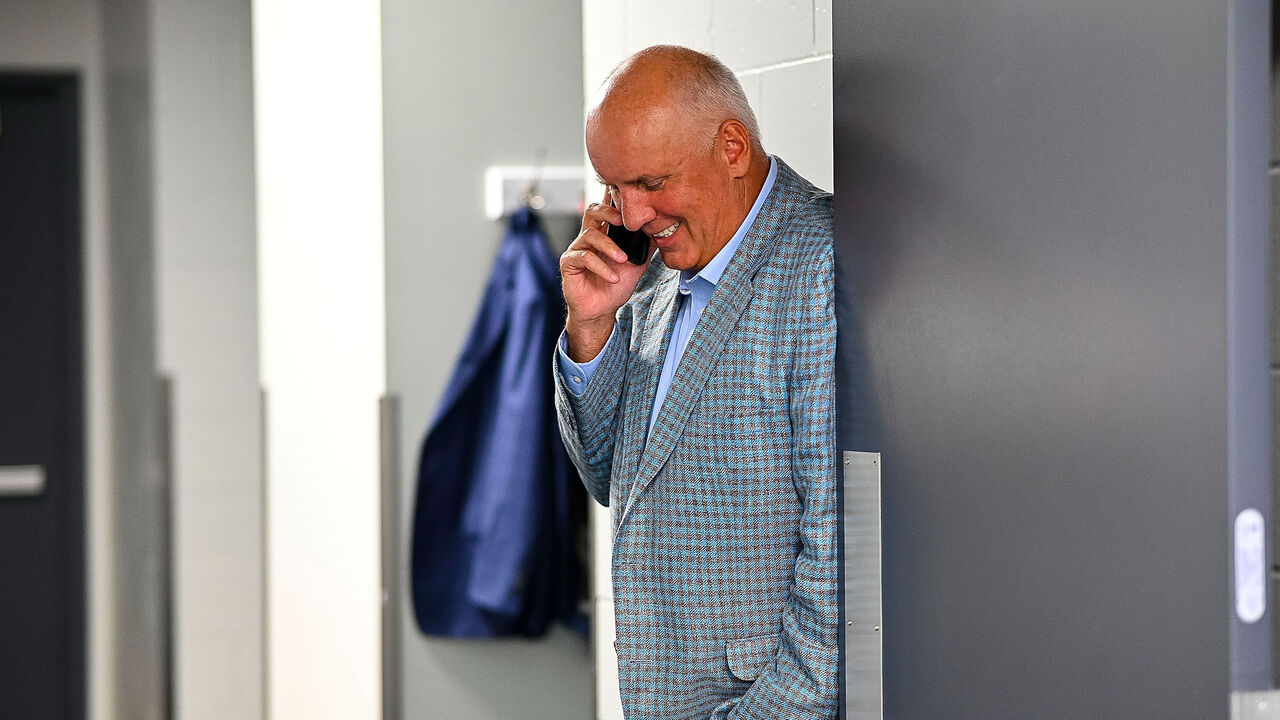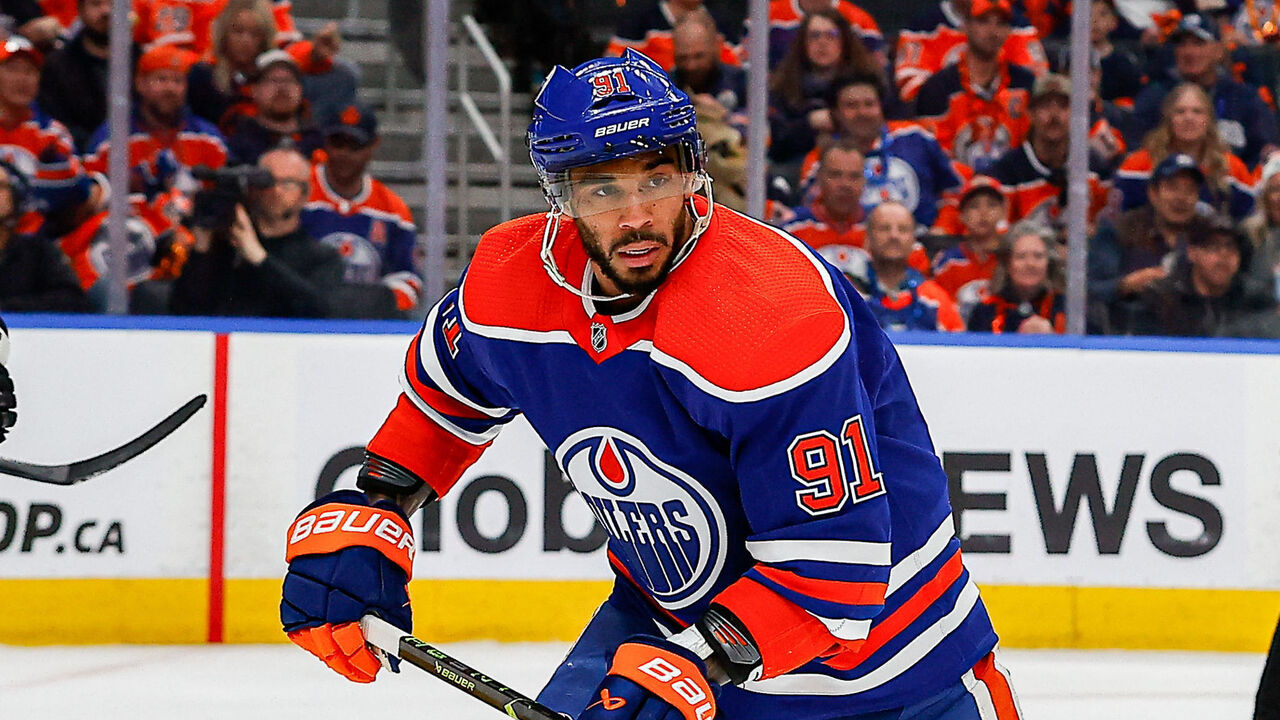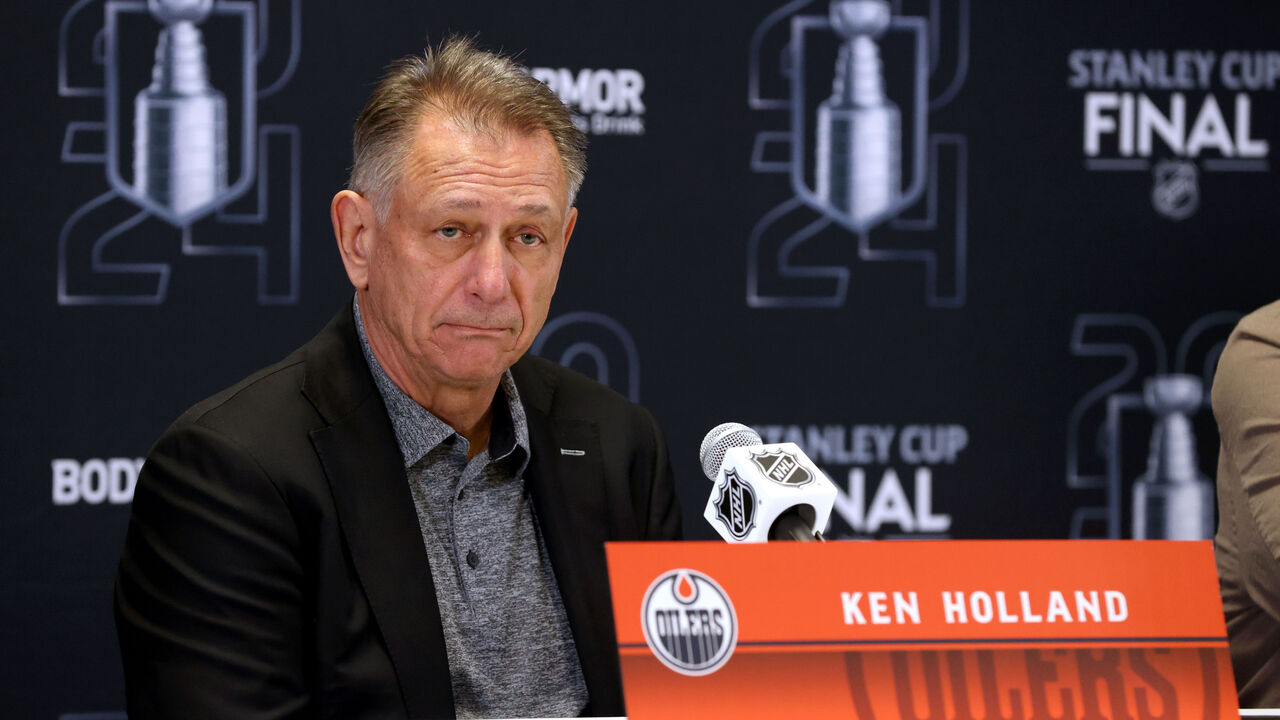5 takeaways from Blues-Oilers offer-sheet saga
The St. Louis Blues shocked everyone in the hockey world Tuesday when they signed a pair of Edmonton Oilers' restricted free agents to offer sheets.
The Blues inked defenseman Philip Broberg to a two-year contract with a $4.58-million average annual value and forward Dylan Holloway to a two-year deal with a $2.29-million AAV. The Oilers have seven days to match the offer sheets. If they don't, they'll receive the Blues' 2025 second-round pick for Broberg and St. Louis' third-rounder for Holloway. The Oilers can't trade Broberg or Holloway during the seven days and can't trade either player for a year if they match.
So, what does this mean for all parties involved?
Armstrong still savvy

Doug Armstrong still has some tricks up his sleeve. The Blues' veteran general manager and president of hockey operations showed exactly why he's won a Stanley Cup, a GM of the Year Award, and is tasked with choosing Canada's upcoming Olympic team. He's still got it.
These offer sheets were carefully orchestrated to make it highly difficult for the Oilers to match while minimizing the loss of draft capital. One more dollar for Holloway would've meant sacrificing a second-round pick. One more dollar for Broberg would've meant sacrificing first- and third-round picks.
If the Oilers match both offer sheets and open the season with a barebones 18-skater, two-goalie roster, they would still be $313,000 over the cap. And that's assuming Evander Kane begins the season on LTIR (more on him later).
Armstrong has given the Blues a good chance at landing a promising young player for a fraction of what it would've cost on the trade market. Frankly, it's ludicrous that NHL GMs rarely utilize such an effective and 100% legal tactic.
The Blues are the perfect type of team for this as they continue their retool on the fly. They're trying to get younger while remaining competitive at the same time. It's resulted in missing the postseason in back-to-back years and not bottoming out enough to yield premium draft picks.
While both Broberg and Holloway would help the team immediately and in the future, the former would undoubtedly be the bigger catch for the Blues. There's a reason he received the larger contract.
For most of last season, many considered Broberg to be a bust. The 2019 No. 8 pick could barely crack the Oilers' lineup during the regular season but shined upon being inserted into the postseason lineup during the Western Conference Final. The 23-year-old carries immense upside as a smooth-skating, 6-foot-3 defender who moves the puck well. In St. Louis, he would immediately slot into a top-four role, potentially on the No. 1 pair with Colton Parayko.
Bowman put to the test early

Before Stan Bowman could even get comfortable in his new chair as GM of the Oilers, he was immediately summoned into battle. Bowman, who was just hired on July 24, must now navigate a highly difficult situation. And the clock is ticking.
If Bowman wants to keep both Broberg and Holloway, he's going to have to clear some cap space. The two most obvious trade candidates are defensemen Brett Kulak ($2.75-million AAV with two years left) and Cody Ceci ($3.25-million AAV with one year left). Everyone else on the Oilers' roster either just signed this offseason, doesn't make enough money, or is indispensable.
Trading either player won't be easy, though. Both are best suited as third-pairing defenders, but their contracts are a bit rich for such roles. Sweeteners would likely need to be included to move either one, as most contenders are capped out at this point in the offseason. Bowman has no leverage, either. Everyone knows he'll be desperate to make a deal, and nobody will be lining up to do the defending Western Conference champions any favors.
Kane's health a major X-factor

The full extent of Kane's injury is unclear, but he's widely expected to begin the season on LTIR, giving the Oilers $5.125 million in cap relief.
"He's going to be out months," Sportsnet's Elliotte Friedman said on his podcast Wednesday. "I'm not talking one or two months, I think it's going to be longer than that."
Friedman added that it remains unknown if Kane will miss the entire 2024-25 season, though.
My sense on Kane is surgery is the most likely course of action. Process is still underway to determine exactly what needs to be done, as there were several significant issues he was dealing with. He is not likely to be ready for training camp, and it could be several months…
— Ryan Rishaug (@TSNRyanRishaug) August 13, 2024
If he's healthy enough to return at some point during the season, the Oilers will have to clear enough cap space to accommodate his salary. If Kane is out for the full season, things become a little easier for Edmonton. But the unknown creates a bind.
What the Oilers can do is punt the decision down the road and make a cap-clearing move at some point during the regular season once they know Kane is on the verge of returning. But that isn't always easy, either.
Oilers may have to choose between Broberg, Holloway

While it is possible for the Oilers to match both offer sheets, as outlined above, it would be a major challenge. Although anything can happen before the seven days are up, the more likely scenario is that the Oilers match just one offer sheet. But how do they decide which player to keep?
At a glance, keeping Holloway is the far more simple route. His cap hit is less than half as much as Broberg's, which not only makes it easier for this season, but also in 2025-26 when Leon Draisaitl and Evan Bouchard will be in line for significant raises. The higher pick for losing Broberg also plays a part.
Holloway, the 2020 No. 14 pick, has produced just 18 points in 89 games across two seasons. But he elevated his game this past postseason with five goals and two assists in 25 contests. He still has plenty of room to grow, too. Though a natural center, he's played almost exclusively on the wing in the NHL.
The Oilers could stomach the loss of Holloway, who's likely headed for bottom-six duty this season barring a breakout. Third-line wingers are very replaceable.
The same can't be said for top-four defensemen, and Broberg's in line to play on the second pair with Darnell Nurse this season. Broberg could eventually succeed Mattias Ekholm - who's 34 with two years left on his contract - on the top pair with Bouchard. His ceiling is that high. And outside of Bouchard and Broberg, all of Edmonton's blue-liners are at least 29 or older.
So while the easier path is keeping Holloway, the Oilers could regret it if they decide to let Broberg go.
Holland's presence might've negated offer sheets

It's a moot point, but it's hard to imagine all of this unfolding if Ken Holland is still GM of the Oilers. The two sides mutually agreed not to renew Holland's contract in June.
Holland and Armstrong are good friends. They've worked together on various Hockey Canada teams throughout the years. It's difficult to envision Armstrong handcuffing his buddy like this. Bowman, on the other hand, was the GM of the Blues' biggest rival - the Chicago Blackhawks - for parts of 13 seasons.
Holland, who served as an NHL GM for 27 straight years, was highly respected among his peers. An opposing GM tendering an offer sheet to one of his RFAs would've been shocking, to say the least. (It only happened once in his career, back in 1998 with Sergei Fedorov).
I wrote about why the Oilers were highly susceptible to an offer sheet for Bouchard last offseason. Given how rare offer sheets are (there have only been 12 signed in the salary-cap era), it'd be foolish to say a team definitely would've tried to poach Bouchard if Holland weren't around. But it's also not inconceivable to think that the Hall of Fame executive's presence might've played a part in protecting Edmonton from an offer sheet.
(Cap source: PuckPedia)
HEADLINES
- Leafs fire assistant coach Savard amid NHL-worst power play
- Hurricanes' Jarvis, Slavin week-to-week with upper-body injuries
- Raddysh's 3-point night pushes Lightning past Blues
- Kraken's Montour expected to miss about 4 weeks after hand surgery
- Crosby after passing Lemieux: 'In my mind, he's still No. 1'